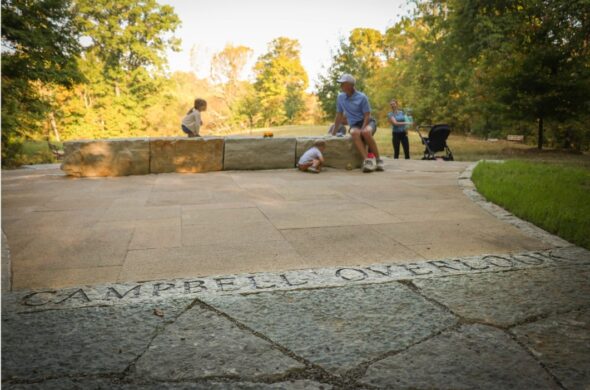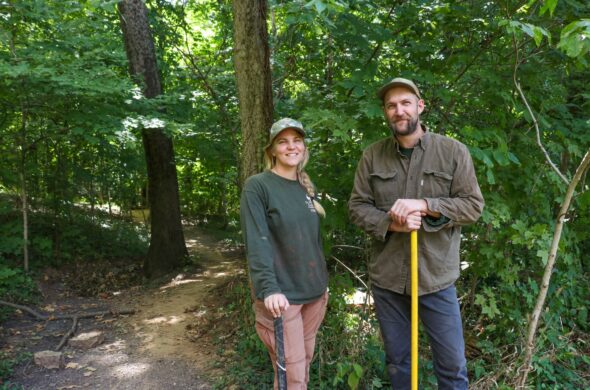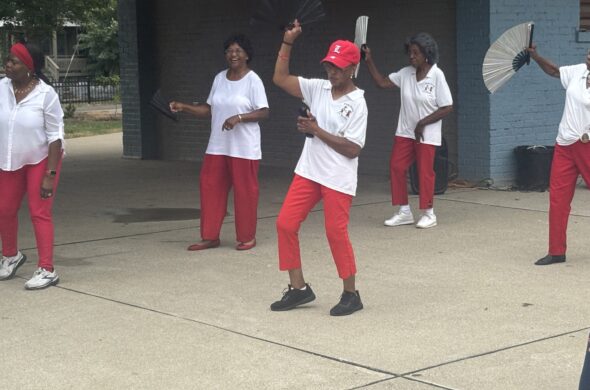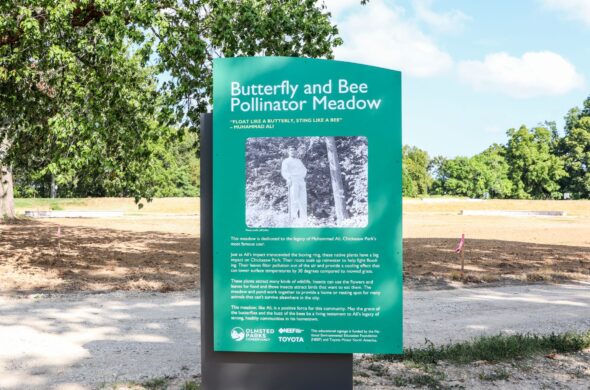Before all the leaves drop to the forest floor, the Team for Healthy Parks spends time each fall spreading rye seed. This is not bluegrass or lawn fescue seed that you may be familiar with, but a native grass called Virginia Wild Rye (Elymus virginicus). This native grass is a cool season, woodland species that is very shade tolerant. It can be found naturally in floodplains, open woods, and grasslands across our park system. Its seed heads are full of grain, almost like wheat. Wildlife such as deer, turkey, songbirds, beetles, and butterflies all utilize the rye as a food source or habitat.
Virginia Wild Rye can be used as a placeholder (cover crop) for natural areas that have been altered by extensive invasive species removal. After species like honeysuckle (Lonicera maackii) are removed from a site, they persist in the seed bank and will flourish again the following year if left unchecked. However, rye can inhibit invasives from reinhabiting as it produces allelochemicals that prevent germination and growth of neighboring plants. Invasive plants also have shallow root systems that do not facilitate the movement of water underground, while rye has a dense and extensive fibrous root system. The fibrous rye roots anchor the soil, preventing erosion by wind and water, especially beneficial on sloped terrain. Rye also improves soil structure by breaking up compaction, aerating the soil and allowing rainwater to filter into the ground more efficiently.

In areas we are working to slow erosion and utilize wild rye as a cover crop, we spread a mixture of perennial and annual rye. The Virginia wild rye we have been discussing is the perennial part of the mixture, while the annual rye is a naturalized species (Lolium multiflorum). We add the annual species as it germinates faster and helps to cover the area while the perennial is establishing. After its first growing season, the annual ryegrass will begin to peter out and give way to more wild rye or forb recruitment from the seed bank. As we have so much herbivory (deer and rabbits) in our natural areas, even healthy woodland forest floor and herbaceous layers are devoid of graminoids like grasses and sedges, so replenishing them also helps our overall biodiversity goals. Other common native grasses in our park system are Riverbank Rye (Elymus riparius) along the Shawnee Riverwalk, Bottlebrush grass (Elymus hystrix) along the Northern Overlook path in Iroquois, and River Oats (Chasmanthium latifolium) along Beargrass Creek in Seneca and Cherokee.
When identifying a time to spread the rye seed, we account for temperature and precipitation, as well as environmental conditions. One of the main conditions is the presence of leaf litter. While leaf litter is a critical part to a functioning ecosystem, it does inhibit seed to soil contact of newly spread rye seed! Why not spread the seed earlier? As you may be familiar, we often have flash droughts in late September and heavy rainstorms in early October. These conditions would cause the germinating seeds to either dry up or wash away with heavy rainfall. One may work in accordance with these conditions, as many native plants are seeding themselves during this time, but we have found it works best for our Team to wait until early November. During this time, we are on the lookout for days with long, slow rainfall and no signs of frost, and when conditions align, we scatter the rye! The seed will then cold stratify (overwinter) before germination in the spring!
Lauren Hendrickson, Natural Areas Specialist
Find something similar: News Cherokee Park Iroquois Park Seneca Park Shawnee Park








